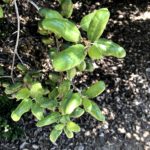Habitat Restoration
Our staff has extensive experience in developing and implementing habitat restoration in wetlands, riparian areas, upland zones, native grasslands, chaparral, and oak woodlands. Our Executive Director is an expert in conservation-based land planning and architecture, our Senior Conservation Biologist is a certified arborist and native oak tree specialist, and our team of Conservation Biologists hold advanced degrees and certifications in a broad range of resource related and scientific fields. From feasibility studies and planning to implementation, maintenance and monitoring, we can oversee the entire project or assist with any steps along the way.
Trippet Ranch Oak Woodland Restoration

CA State Parks and RCDSMM have been working together to restore 10 acres of oak woodlands that were devastated during the last drought at Trippet Ranch in Topanga State Park. Over 200 coast live oak (Quercus agrifolia) acorns and seedlings have been planted to mitigate for the loss experienced in the park. During the hot summer months, baby oaks desperately need any water they can get and rely on volunteers for that water and additional care. Due to Covid-19 precautions, RCDSMM is not able to hold our monthly large volunteer events to water and care for these trees. RCDSMM is actively looking for volunteers to join our Topanga Oak Team (TOT) and help care for these trees over the summer months. Please visit our Adopt a Baby Oak page for more information on the program and how to get involved.

Lower Topanga Creek Riparian Oak Woodland Restoration
Planting coast live oak (Quercus agrifolia) saplings today, which take up to 20 years to reach reproductive maturity, is an important step to restoring woodland habitat connectivity and integrity in the long-term. This project will bring at least 250 LA County students and 50 community volunteers to Lower Topanga Creek to reforest the riparian corridor, amounting to at least 75 oak saplings across five acres. Riparian woodlands are some of the most productive ecosystems in Southern California and throughout the United States. The greatest anticipated benefit of the project is improved function of the lower Topanga  Creek riparian corridor and increased benefit to both terrestrial and aquatic wildlife populations derived from the rehabilitation of critical ecosystem services.The project will take place during the 2016/17 school year in oak planting season between October 1, 2016 and February 28, 2017. Oaks planted over the 17 week project period will augment 30 oaks already planted at site A by RCDSMM community volunteers. Check the Events Page for community oak planting days.
Creek riparian corridor and increased benefit to both terrestrial and aquatic wildlife populations derived from the rehabilitation of critical ecosystem services.The project will take place during the 2016/17 school year in oak planting season between October 1, 2016 and February 28, 2017. Oaks planted over the 17 week project period will augment 30 oaks already planted at site A by RCDSMM community volunteers. Check the Events Page for community oak planting days.
Rodeo Grounds Berm Removal Project, Lower Topanga Creek

Restoration and revegetation of the Rodeo Grounds Berm was completed in 2009 by the  RCDSMM and partners. The project restored over 12 acres of floodplain function, improved 3,000 feet of channel connectivity, increase critical passage opportunities to four miles of high quality fish habitat, restored 12 acres of riparian habitat, removed 12 acres of invasive and exotic vegetation, removed water pollutant sources associated with the structures, and allowed natural re-adjustment of sediment transport and bed loads.
RCDSMM and partners. The project restored over 12 acres of floodplain function, improved 3,000 feet of channel connectivity, increase critical passage opportunities to four miles of high quality fish habitat, restored 12 acres of riparian habitat, removed 12 acres of invasive and exotic vegetation, removed water pollutant sources associated with the structures, and allowed natural re-adjustment of sediment transport and bed loads.
 Malibu Lagoon Restoration and Post-Restoration Fish Monitoring
Malibu Lagoon Restoration and Post-Restoration Fish Monitoring
The RCDSMM joined together with California State Parks, The Bay Foundation, California State Coastal Conservancy, and Los Angeles Waterkeeper to improve the health of the Malibu Lagoon in 2012/13. The ecosystem had been impaired by excess sediment and low dissolved oxygen levels, threatening wildlife. The restoration improved circulation, fish habitat, and public access. The RCDSMM continues to monitor fish populations post-restoration and generates an annual report on their findings.



